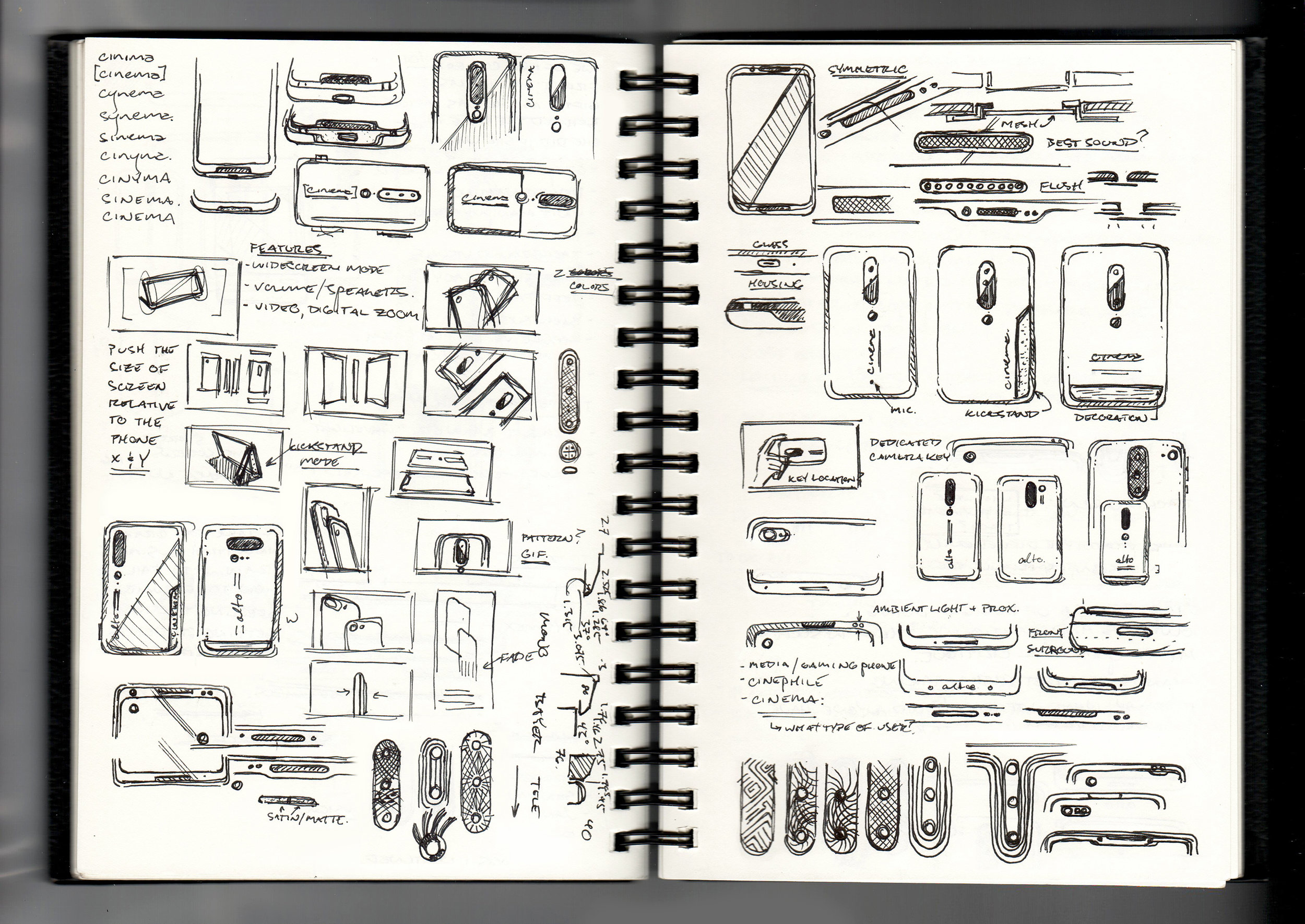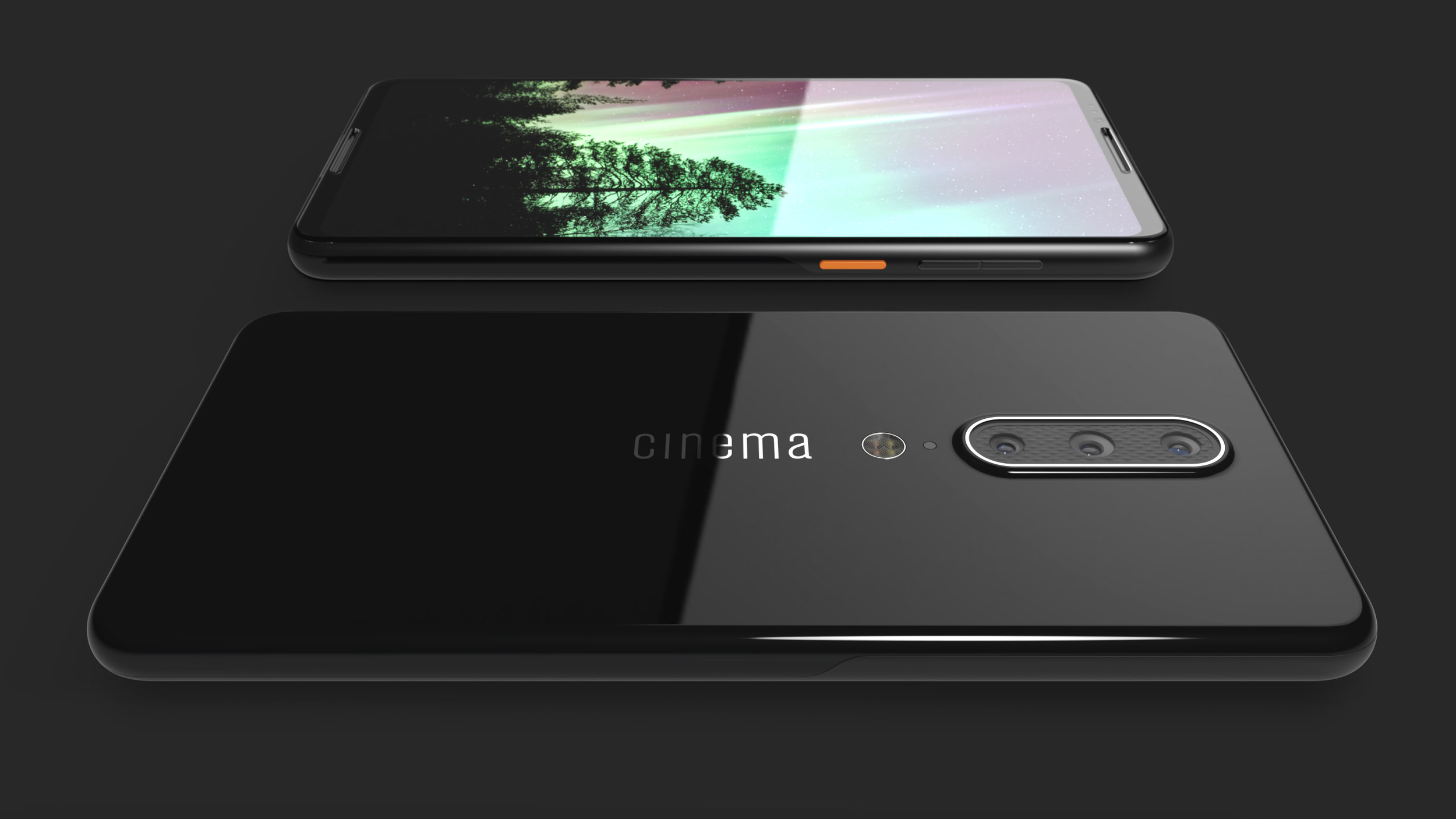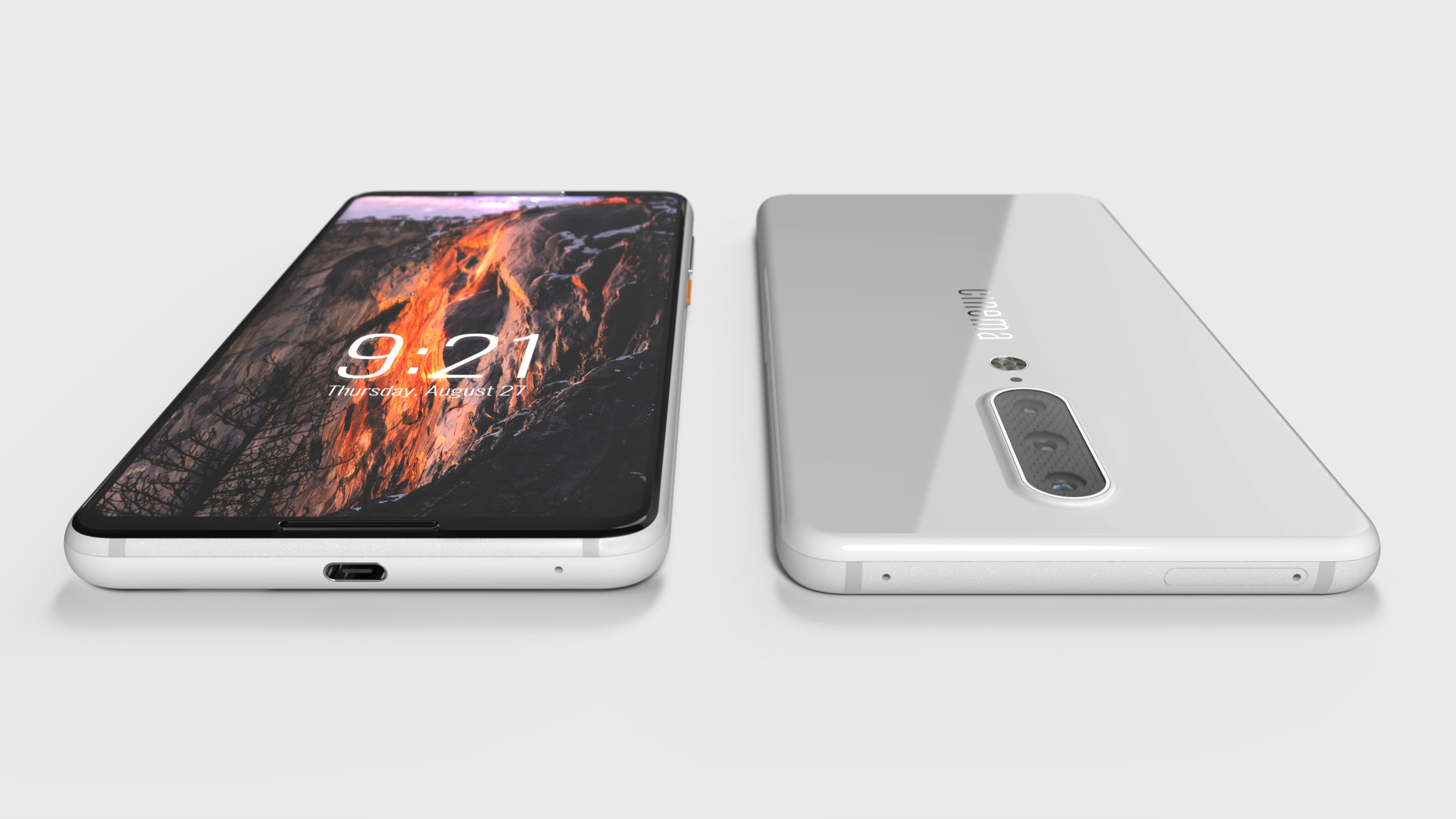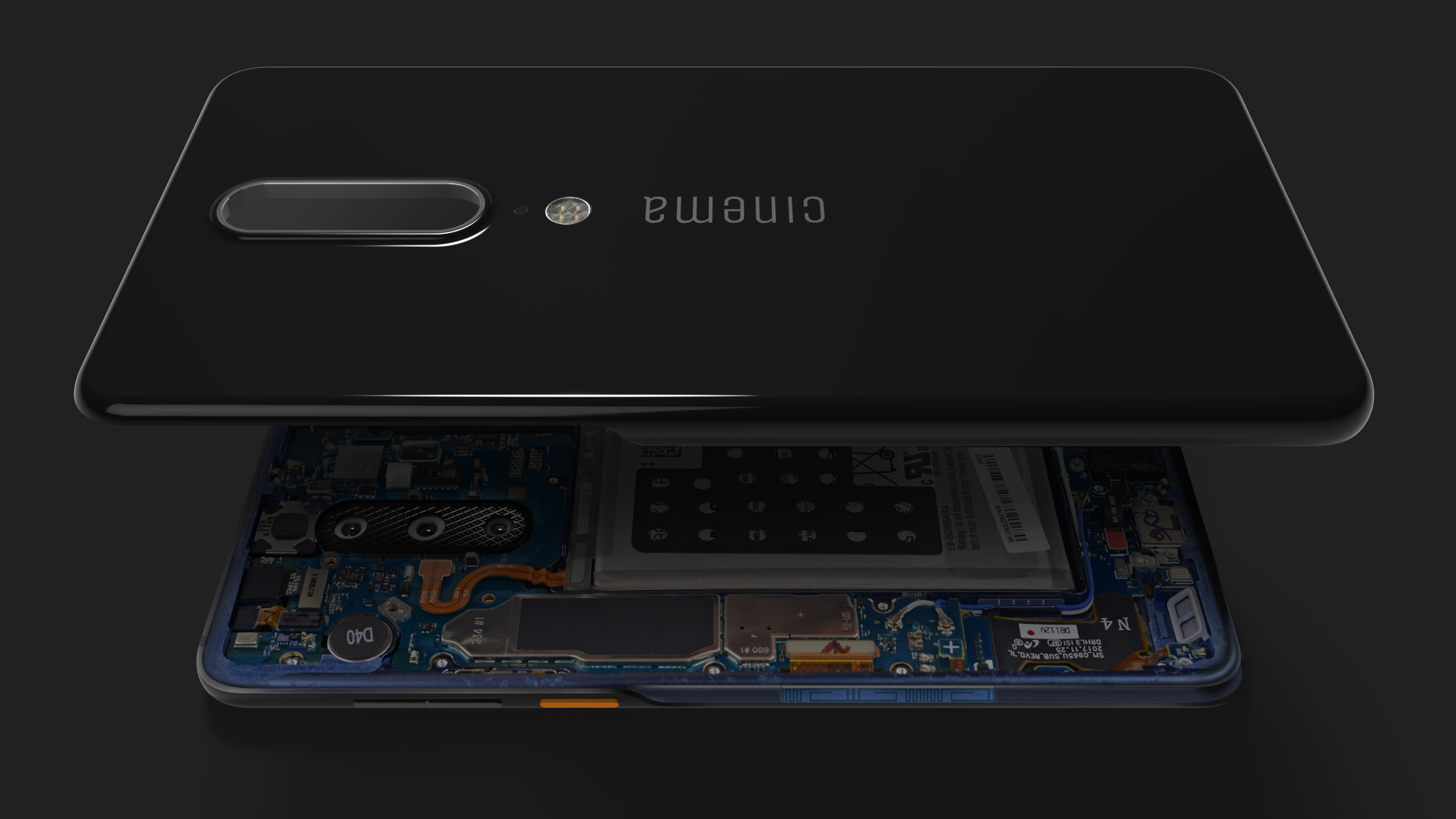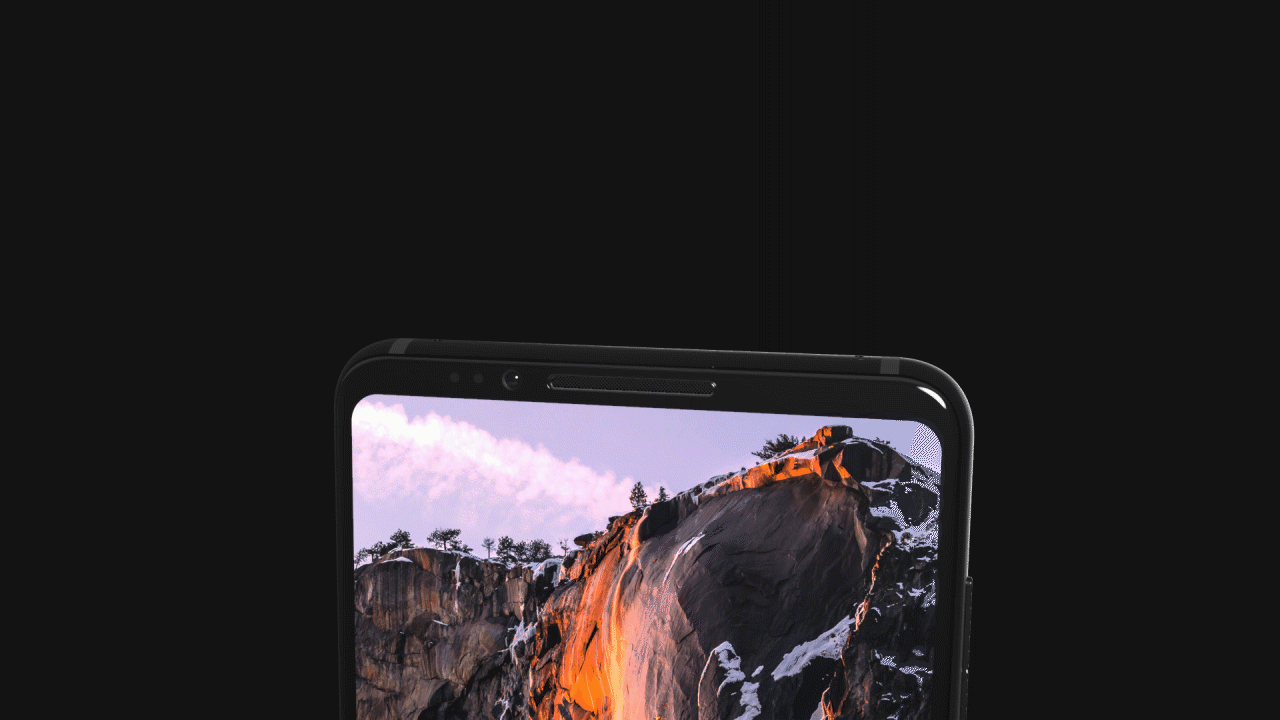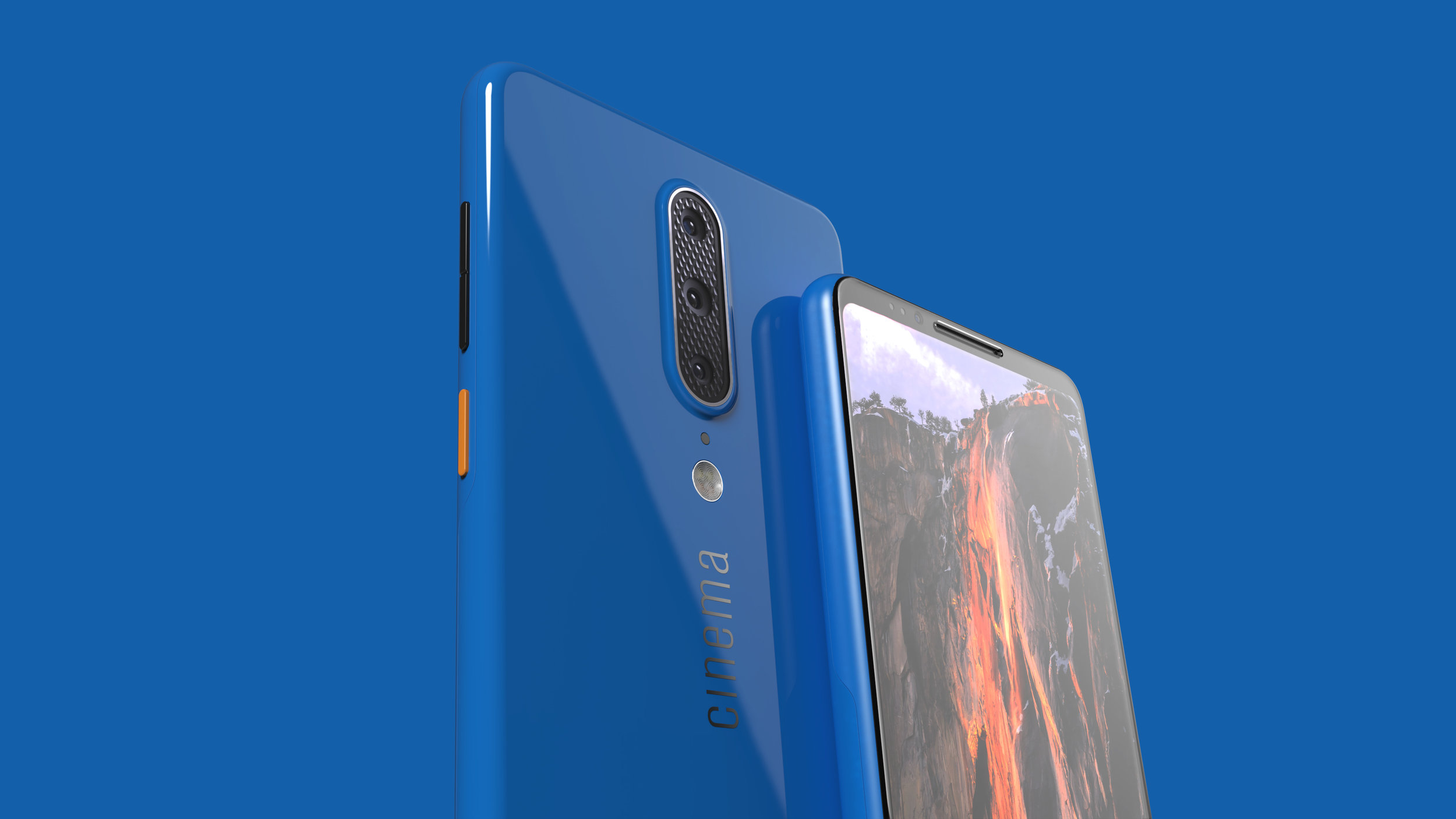In exploring a phone for the 5G market, I wanted to think about what consumers might want in a new device. Having worked on other phones that were driven by spec sheets, I wanted this one to have a bit more personality and lead the development with an identity first.
After some initial exploration, I started digging this notion of a phone that provided a cinematic visual and audio experience. 5G brings with it more data, which will power ever higher resolutions and refresh rates in gaming and movies. Thus, the “Cinema” concept phone was born.
The 5G antennas are positioned on the four sides of the phone facing out, so I needed an architecture scheme that minimized metal on the sides. I’ve always thought it silly that fragile glass is used for the rear face of phones (for the sake of gaining a few tenths of a millimeter in the Z-stack) so I opted instead for a PC rear cover. This allowed me to jog the parting line around the antennas, becoming a signature visual element.
Following the strong media theme, I wanted a powerful camera option for dynamic photography and film-making. I used a three camera scheme in the rear, centrally located, with a steel accent surrounding the subassembly. The cameras combine in pairs for a capable zoom and good performance in low-light conditions. A 3D pattern stamped into the camera bezel plate would further elevate the appearance and tie the modules together, while still offering enough bonding surface for the contact adhesive around the camera glass.
Color matching the anodized aluminum faceplate and the PC rear cover brings a level of playfulness to the design that I really liked. Using the power key as a complimenting color pop provided some fun CMF combinations.

